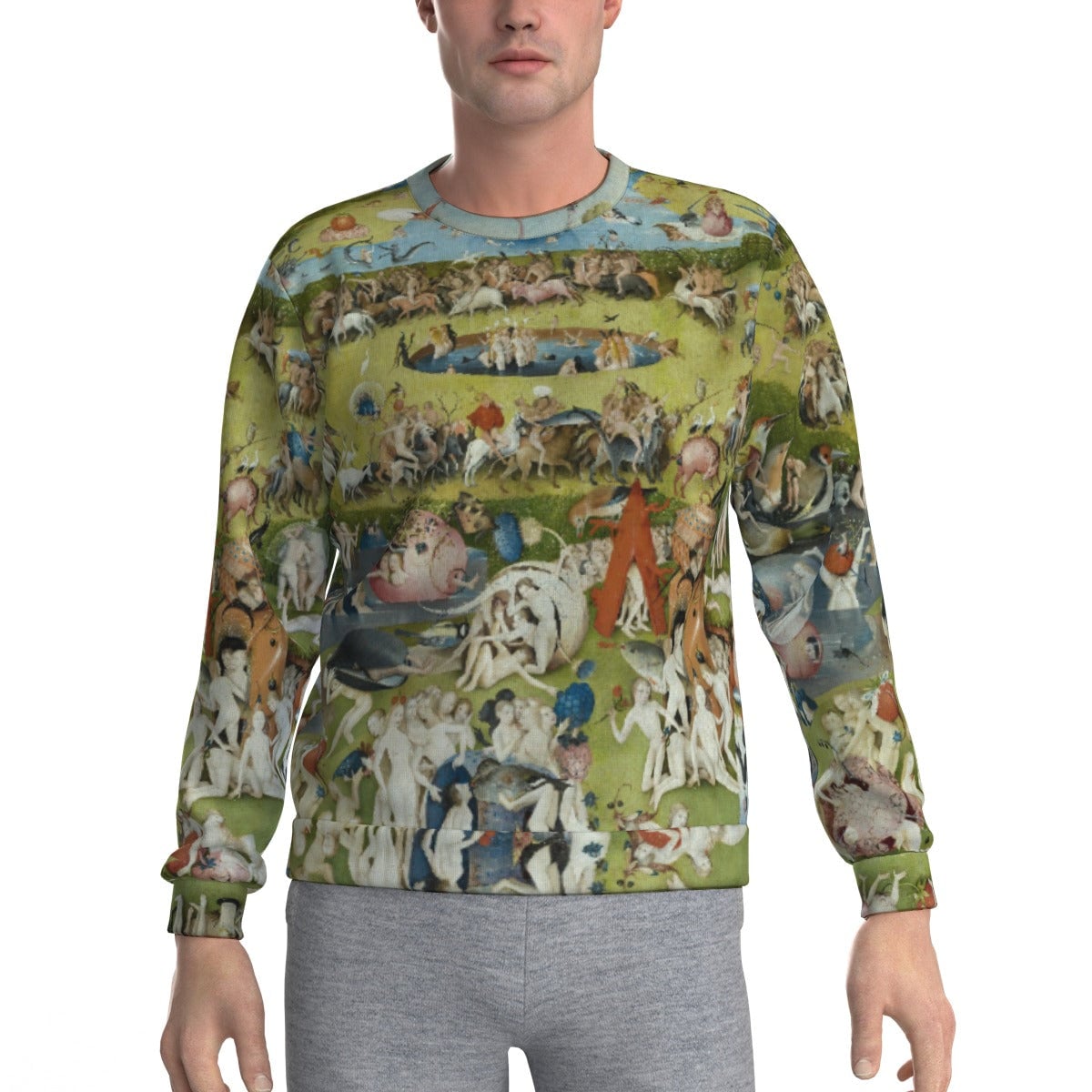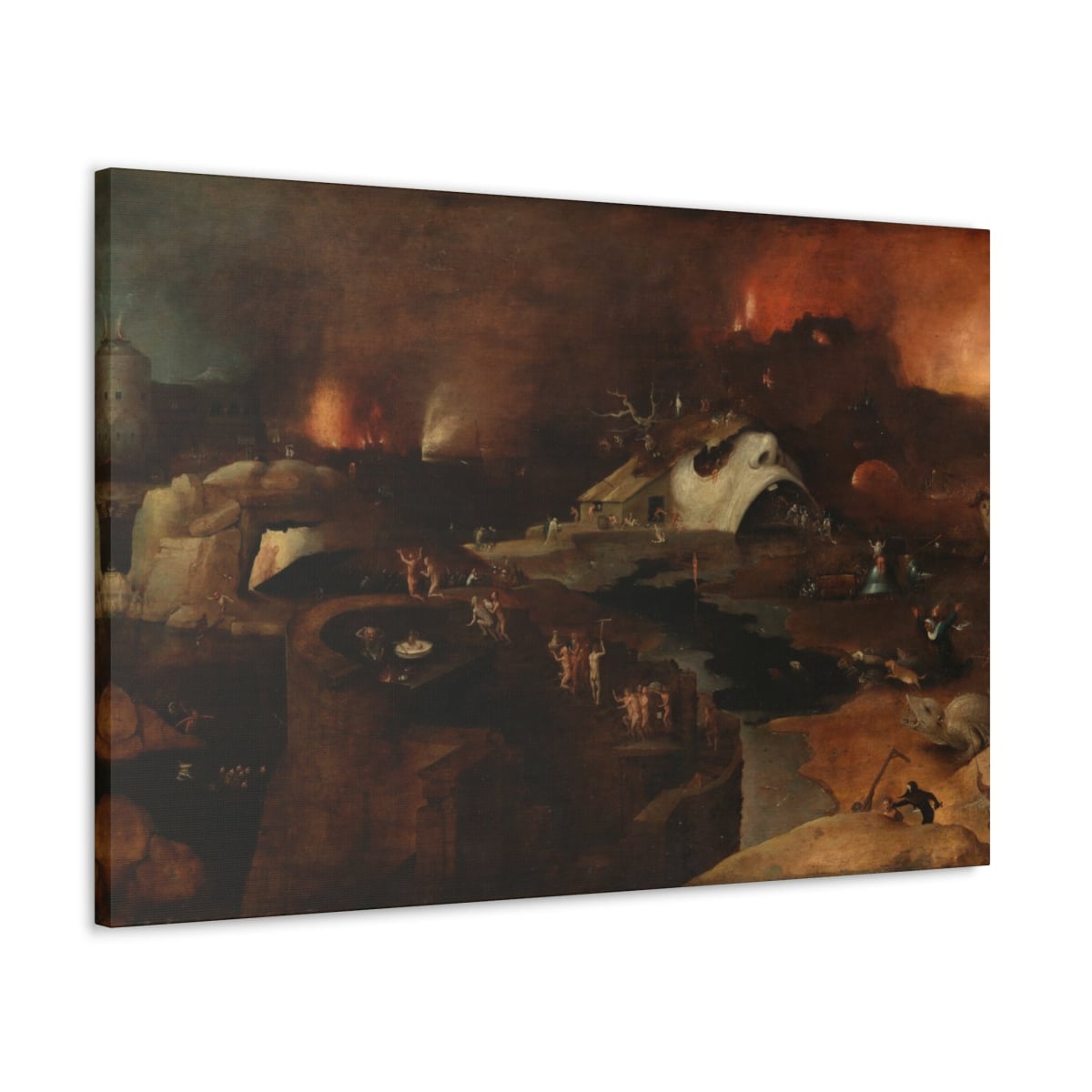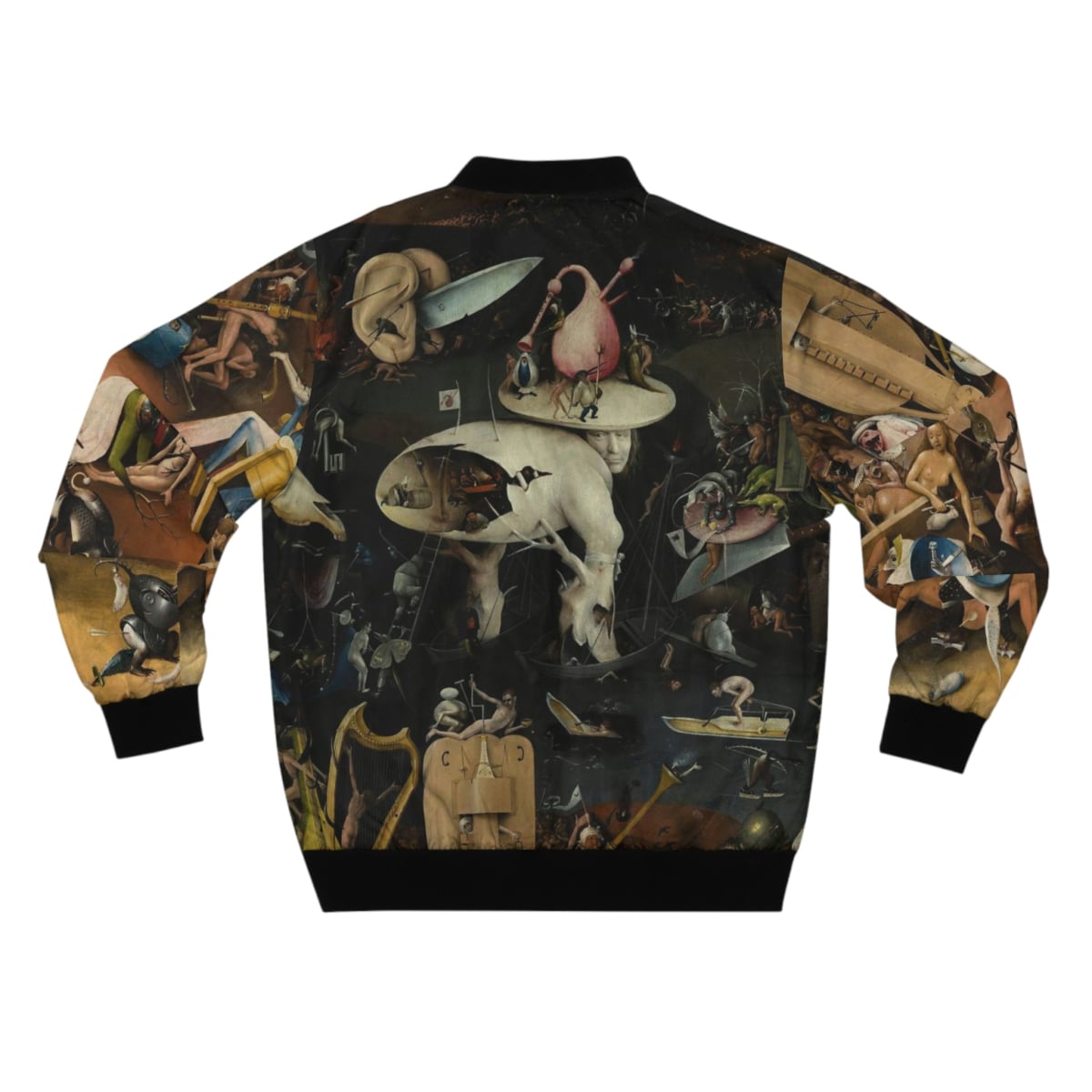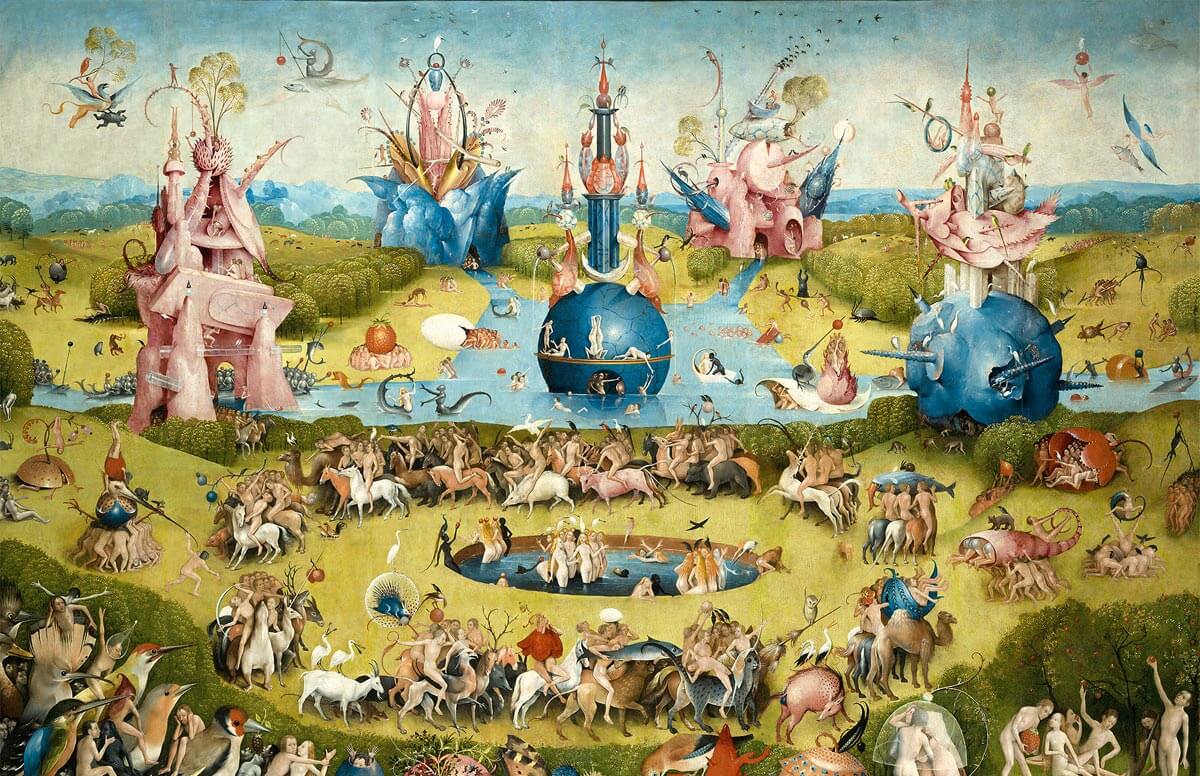
Hieronymus Bosch's The Garden of Earthly Delights
Welcome to an intriguing exploration of "The Mob Wife" - a brand that allures with its unique blend of mystery, power, and charm. In today's rapidly evolving fashion world, The Mob Wife stands out as a benchmark for style statements that are both iconic and accessible. This piece will introduce you to the ethos of The Mob Wife and provide you with a fresh perspective about it. Designed for those passionate about fashion, this resource aims to reveal the magnetic lure of The Mob Wife and its influence in the realm of fashion.
Hieronymus Bosch and His Art Style
When we talk about Hieronymus Bosch, an artist who captivated audiences with his surreal art, we delve into an era where art was much more than just aesthetics—it embodied underlying messages and beliefs. Bosch works are renowned for being enigmatic, and their unique style has influenced many artists over centuries.
The style of Hieronymus Bosch ensures he stands apart from many other painters of his time. When examining Bosch works, you find a distinctive style that merges reality with imaginative elements. His compositions often depict scenes from religious and mythical narratives, transforming them into surreal landscapes filled with intricate details.
One crucial characteristic of Bosch’s art style is the creativity and symbolism encapsulated in his works. Every piece holds significant symbolic meaning, using a variety of objects to portray these symbols. For example, fruits in his painting often represent temptation and sin. Such a profound use of symbolism and allegory is a characteristic feature in Bosch works.
There's a peculiar aura around the art style of Hieronymus Bosch. Known for his fantastical, often nightmarish visionary illustrations, Bosch’s art throws viewers into a world that blurs the line between reality and imagination. His treatment of colors and light further heightens the tone and mood of his works, creating a sense of mystery that is unrivalled.
Bosch’s art is also characterized by a strong sense of narrative. His detailed panels often tell grim stories of life, death, and religious ideologies. This storytelling aspect deepens the viewer's engagement with Bosch works–they are not passive spectators but active participants, unfolding the narratives.
In conclusion, understand that to truly appreciate the art style of Hieronymus Bosch, one must appreciate the complexity and multi-layered symbolism present in all Bosch works. His fascinating interplay between reality and fantasy continues to captivate viewers, and his impact on the art world remains unrivaled.
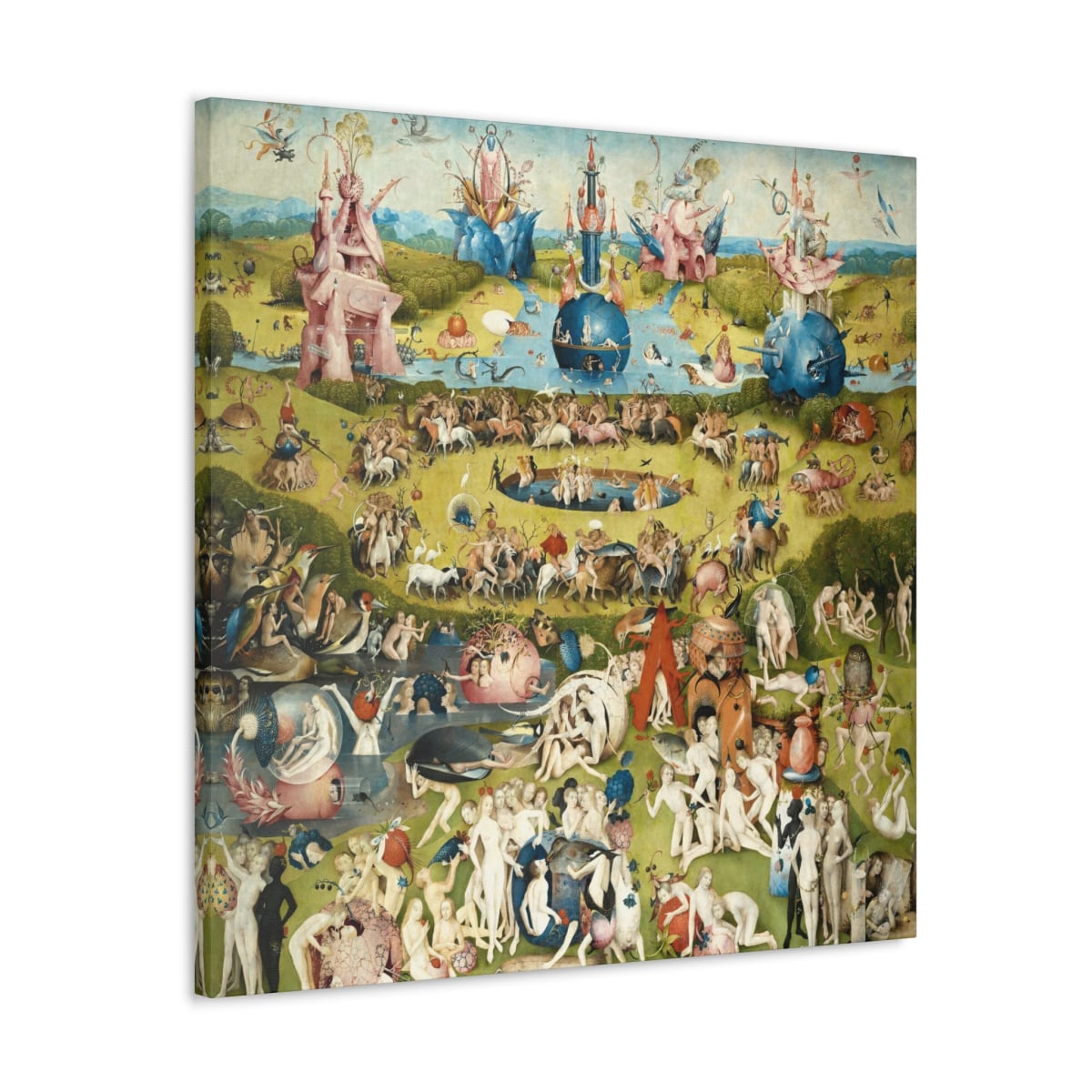
Significance of 'The Garden of Earthly Delights'
The Garden of Earthly Delights, a Bosch painting, is a seminal piece in the annals of art history. It's been analyzed, interpreted, and cherished by art enthusiasts and scholars for centuries. Noted for its intricate and fantastical imagery, this triptych by Hieronymus Bosch is a visual exploration of the concepts of paradise, earth, and hell. Seemingly packed with strange and vivid imagery, it's believed to encapsulate Bosch's views on sin and morality.
The left panel represents the Garden of Eden, where God introduced Eve to Adam. This scene is filled with tranquility, showcasing the innocence and untouched beauty of the world before the fall. The central panel, from which the painting receives its name, represents the earth. Full of frolicking nude figures and bizarre creatures, it's proposed to depict humanity's unrestrained indulgence in earthly pleasures, a possible allegory of the sin. Pictorially lively yet morally cautionary, it warns of the perils of excessive sensual indulgence.
The right panel, a chilling portrayal of hell, serves as a stark contrast. It embodies the repercussions, the fallout of straying away from divine laws. Chaos, misery, and doom jarringly dominate this landscape.
In essence, Bosch's painting The Garden of Earthly Delights is more than a masterpiece; it's a deeply philosophical and moral work. Whereas the beauty of paradise and the attraction of earthly delights lure the viewer, the depiction of hell provides a bleak jolt of reality, a potent reminder of the dire consequences of sin. Thus, through this intricate triptych, Bosch provides a vivid visual lesson on the perils of hedonism and the importance of moral integrity.
Despite having been painted around 1500, its relevance has not diminished. Indeed, it continues to resonate, providing us with a thought-provoking confrontation of our vulnerabilities and our struggle with earthly desires and sin. Bosch's The Garden of Earthly Delights stands as a timeless testament to the ceaseless human journey from innocence to experience, from paradisiacal innocence to earthly indulgence, and eventually, for some, to the hellish consequences of unbridled hedonism.
Understanding the Role of Triptych in Bosch's Artworks
Art lovers and enthusiasts who appreciate the depth and complexity in a work of art will be familiar with the term 'triptych'. This unique style found its expression in many of Hieronymous Bosch's artworks, transforming the 15th-century Dutch painter's storytelling approach. To understand the importance and immense role of triptych in Bosch's paintings, we dive into his most iconic illustration - 'The Garden of Earthly Delights'.
The term 'triptych' comes from the Greek meaning 'three-fold'. It is essentially a type of polyptych consisting of three panels, typically hinged together. These panels often work together to tell a story or present complimentary or contrasting themes. Not many artists mastered the art of the triptych like Hieronymous Bosch. The complexity and thought provoking narratives that Bosch managed to capture within this versatile format are nothing short of extraordinary.
With 'The Garden of Earthly Delights', Bosch arguably created one of the most interesting triptychs in history. This particular work of art stands as a testament to Bosch's artistry and innovation. The triptych format allowed Bosch to explore and depict various facets of life, morality, and religious themes. structured into a remarkable narrative spanning from the creation of man, to earthly experiences, and finally to damnation.
When the triptych is closed, one can see the depiction of the creation of the world. With the unfolding of the panels, there's a transition into the Garden of Eden on the left, the lively depiction of earthly delights in the centre and the stark, nightmarish depiction of Hell on the right panel. The striking contrast Boschs's 'The Garden of Earthly Delights' revels in, a characteristic of Bosch’s triptych artworks.
In conclusion, the triptych was not just a style of painting for Hieronymous Bosch, it was his canvas for exploring deep philosophical themes and presenting them in a relatable, visually captivating format. Understanding the role of the triptych in Bosch's artworks provides a deeper appreciation for not just his skill as a painter, but his ability to tell a story and evoke emotion through his vivid, intricate panels. He was, without a doubt, a master of his craft and the triptych was his tool of choice.
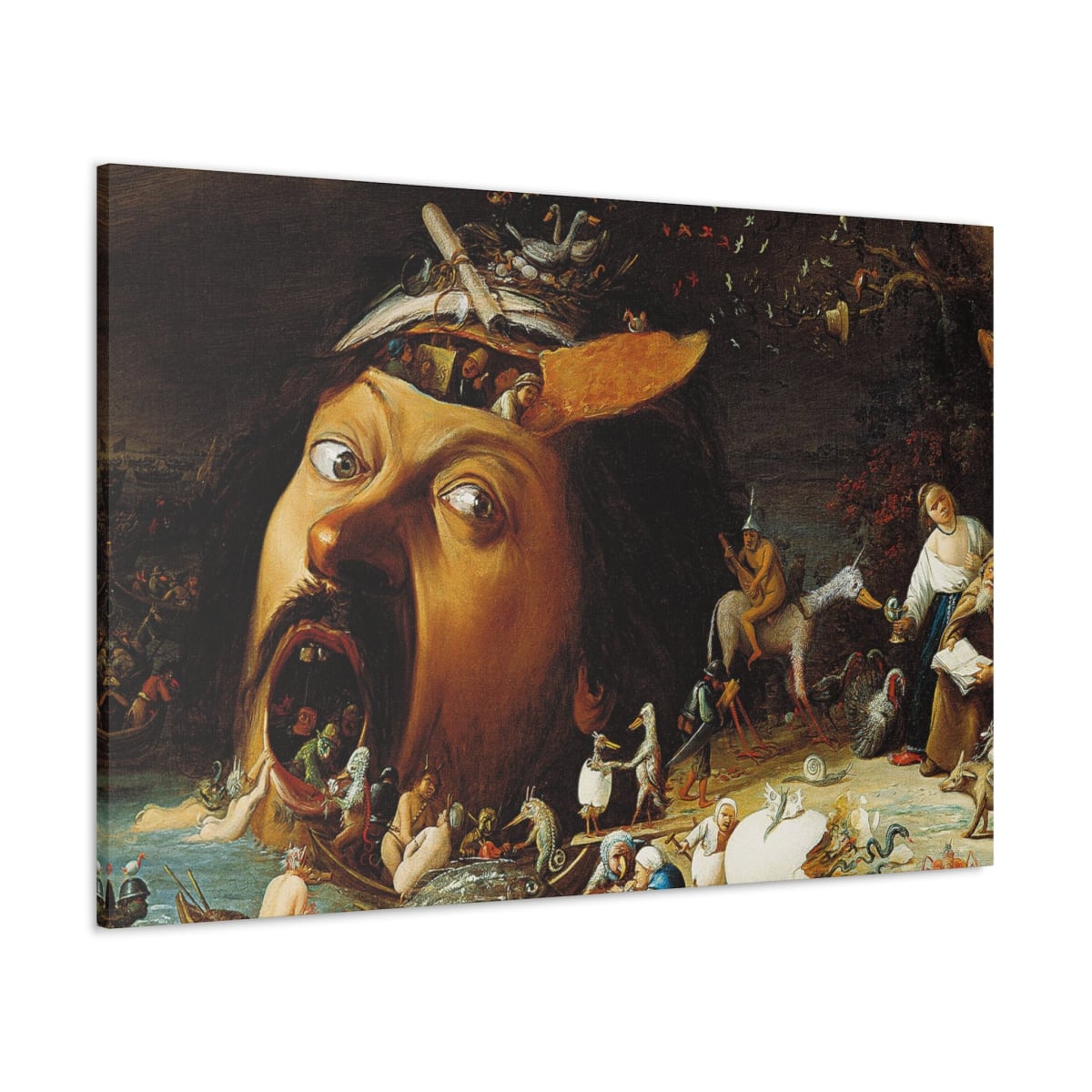
10 of The Most Famous Paintings by Hieronymus Bosch
- The Garden of Earthly Delights (1490-1510): Bosch's best-known and most ambitious work. This triptych demonstrates the artist's unique perspective on morality using complex, surreal imagery. It epitomizes Bosch’s narrative genius at portraying human folly, combined with his exceptional skills in capturing minute details.
- The Haywain Triptych (1516): An allegorical warning against the pursuit of worldly pleasures, this triptych uses the central image of a hay wagon to symbolize the futility of earthly greed.
- The Adoration of the Magi (1475): An example of Bosch’s early work. It combines religious themes with the artist's unmistakably detailed style.
- Death and the Miser (1490-1510): This work explores the eternal struggle between material wealth and spirituality. The rich narrative is a showcase of Bosch's moralistic narrative and his imaginative interpretations of Biblical stories.
- The Last Judgement (1482): This triptych uses vivid and harrowing imagery to portray the theme of divine judgement, which is a testament to Bosch’s mastery in depicting tales of morality and caution.
- The Temptation of St. Anthony (1505-06): A work centered around the trials of the saint, this painting displays Bosch's genius at visualizing the complex interplay between spiritual struggle and worldly temptation.
- Christ Carrying the Cross (1490): A deeply poignant piece, depicting Christ's journey to the crucifixion site. The profound emotion and haunting realism in this piece make it a standout in Bosch's oeuvre.
- The Seven Deadly Sins and the Four Last Things (1490): An iconic work showcasing Bosch's perspective on sin and afterlife, reflecting his deep moral convictions and his gift for creating visual metaphors.
- The Conjurer (1502): This satirical piece presents an allegorical warning about the dangers of deception. It signifies Bosch’s ability to convey complex societal critiques through his artworks.
- The Extraction of the Stone of Madness (1494): An intriguing work that uses the metaphor of a 'stone of folly' being surgically removed from a patient's head, symbolizing foolishness and irrationality. It demonstrates Bosch’s expertise in making detailed psychological insights and his knack for allegory.
Biography and Influence of Hieronymus Bosch
Hieronymus Bosch, born Jeroen Anthonissen van Aken, was an influential figure in the art world whose biography is as intriguing as his artwork. Bosch's artistry is woven into the fabric of the art history, with his innovative approach to painting significantly contributing to the evolution of visual arts. Akin to the shifts in the art styles discussed in "Hieronymus Bosch and His Art Style", Bosch pushed the boundaries of representation in his time, carving out a unique and timeless place in the world of art.
Despite the mystery that shrouds much of Bosch's life details, he was undoubtedly a deeply spiritual and worldly artist. Known for his fantastic illustrations of religious concepts and narratives, his works often reflected deep-seated societal concerns, blurring the lines between the heavenly and the worldly. His most iconic piece, 'The Garden of Earthly Delights', which we explored in "Significance of 'The Garden of Earthly Delights'", stands as a testament to Bosch's ability to evoke moral and philosophical questions through his captivating and intricate designs.
The triptych format, a central element in Bosch's works as we touched upon in "Understanding the Role of Triptych in Bosch's Artworks", further emphasized his revolutionary vision. Not merely a structure to adhere by, Bosch’s manipulation of the triptych served to enhance the narrative and emotional impact of his works. The triptych's trio of panels allowed for an unfolding narrative of morality that was as visually striking as it was intellectually stimulating.
Bosch used his commanding grip on visual narratives to explore the breadth of human experience, weaving together earthly realities with spiritual metaphysics. His ability to depict visceral depictions of heaven and hell has cemented him as one of the forefathers of the Northern Renaissance and gothic art.
In the biography of this remarkable Bosch artist, one can find the enduring impact of his legacy in the art sphere. This lasting influence can be seen in the countless artists he inspired, whether through his use of symbolism, his creative exploration of form and space, or his dramatic depictions of morality and desire. His contribution to the world of art remains unrivaled, marking him as not just a significant Bosch artist but a pivotal figure in the art history timeline.
| Painting's Name | Year | Art Style |
|---|---|---|
| The Garden of Earthly Delights | 1490-1510 | Northern Renaissance |
| The Last Judgment | 1482 | Northern Renaissance |
| The Haywain Triptych | 1516 | Northern Renaissance |
| The Temptation of St. Anthony | 1501 | Northern Renaissance |
| The Adoration of the Magi | 1475 | Northern Renaissance |
| Death and the Miser | 1490-1500 | Northern Renaissance |
| The Seven Deadly Sins and the Four Last Things | 1485 | Northern Renaissance |
| Ecce Homo | 1475-1485 | Northern Renaissance |
| Christ Carrying the Cross | 1515-1516 | Northern Renaissance |
| The Conjurer | 1502 | Northern Renaissance |
Panel Works and Exhibitions
When it comes to the realm of art, few figures stand out as distinctly as Hieronymus Bosch, famed for his unique narratives and distinctive style. A core part of Bosch's work is the use of panels, an element that sets his art apart and contributes to its widespread fascination. Bosch's panel works are quite different from the prevalent trends of his time due to their complex, intricate designs and multifaceted interpretations.
The panel works of Hieronymus Bosch are often a source of wonder and intrigue for both art enthusiasts and critics alike. These pieces are not just paintings; they are visual tales narrated on wood. The narrative in his most celebrated panel works like 'The Garden of Earthly Delights' is as profound as it is enigmatic, encouraging its viewers to ponder upon the nature of sin and its consequences.
What's more, the concept of the exhibition takes on a whole new dimension when it comes to displaying Bosch's art. Each exhibition of Bosch’s works offers an immersive journey into the surreal world that he brilliantly portrayed on panels. His pieces, when displayed together, give an in-depth understanding of his technique, themes, and messages, much more than what can be gleaned from viewing them separately.
One can't discuss Bosch's art without elevating the significance of his panel works. Not only do these carry his singular approach to storytelling, but they also narrate tales that are far removed from reality, drawing viewers into a deeply imaginative realm.
The exhibitions of Bosch's art, specifically his panel works, offer an extraordinary way for viewers to connect with the late artist's thought process - a rare opportunity to comprehend the vastness of his incredible imagination.
The fascination that surrounds Bosch's panel works and their exhibition extends to his other paintings as well. Gaining an understanding of Bosch’s paintings through exhibitions provides a holistic perspective on his oeuvre, therefore, further solidifying his legacy.
Whether it's the mysterious and chaotic scenes captured in Bosch's paintings or the grandeur of his exhibitions, his legacy continues to resonate with art lovers today. Hieronymus Bosch's unique canvas narratives, impactful panel works, and awe-inspiring exhibitions secure his position as one of the most intriguing artists of his time.
Other Therms Related to Hieronymus Bosch
If we're talking about Hieronymus Bosch, there's a plethora of related terms that come to mind. One intriguing concept connected with his art is the medieval 'brotherhood,' which references specific groups that have historically influenced arts and society. Bosch's association with the Brotherhood of Our Lady was a significant part of his biography and strongly impacted his art style. They were deeply connected to religious themes, clearly reflectable in Bosch's artworks, especially in his triptych pieces.
Another term often associated with Bosch is 'lady.' In the case of Bosch, this could likely refer to the figures of ladies frequently depicted in his panel works. Speaking from an artistic standpoint, the representation of the 'lady' in his works held a broader, symbolic attachment, often embodying elements of seduction, sin, or virtue. The way Bosch encapsulated these elements in his artworks, particularly 'The Garden of Earthly Delights', still bewitches art enthusiasts and critics today.
Lastly, the term 'museo del prado' is immensely relevant when discussing Hieronymus Bosch. Based in Madrid, the Museo del Prado houses one of the finest collections of European art. This renowned museum has been influential in furthering the understanding and appreciation of Bosch's works. Its exhibitions over the years have served as a platform to propagate the significance of triptych in his art. It's here where most of the panel works of Bosch, including the fascinating 'The Garden of Earthly Delights', can be extensively studied.
In essence, deep diving into these associated terms like 'lady', 'brotherhood', and 'museo del prado' not only enriches our understanding of Hieronymus Bosch, but it also sheds light on the historical and societal contexts that shaped many of his artworks. This demystifying journey is certainly an avenue that any art lover or The Mob Wife reader shouldn't miss out on.
In conclusion, The Mob Wife brand offers a unique combination of style, quality, and value. It's more than just a brand, it's a lifestyle, a statement. Our extensive range of products provides the perfect solutions for those who want to make a bold fashion statement whilst also insisting on outstanding quality. The Mob Wife is committed to providing excellent customer service and a seamless shopping experience. Explore our collection and start adding a touch of sophistication to your wardrobe today - The Mob Wife delivers on expectation!
FAQs
Q: What makes The Mob Wife brand stand out in the fashion industry?A: In the rapidly evolving fashion world, The Mob Wife is unique for its iconic yet accessible style statements, providing the perfect blend of mystery, power, and charm.
Q: What is the ethos of The Mob Wife brand?
A: The ethos of The Mob Wife is designed for those passionate about fashion, aiming to reveal the magnetic lure of the brand and its influence in the realm of fashion.
Q: How does the art style of Hieronymus Bosch influence The Mob Wife?
A: The unique and enigmatic style of Hieronymus Bosch, known for blending reality with imagination and utilising symbolic meaning, has influenced many aspects of The Mob Wife's designs and aesthetics.
Q: What is The Garden of Earthly Delights?
A: The Garden of Earthly Delights is a seminal work by Hieronymus Bosch, known for its intricate, fantastical imagery and philosophy. It explores the concepts of paradise, earth, and hell, serving as a vivid visual lesson on morality.
Q: Why is the term 'triptych' relevant to Hieronymous Bosch’s artworks?
A: The term 'triptych' is relevant as it refers to a style used by Bosch in many of his artworks. This format, consisting of three panels often telling a story or representing contrasting themes, allowed Bosch to explore his revolutionary vision and unique narratives, most notably in his 'The Garden of Earthly Delights' work.
Q: What is the role of the 'lady,' 'brotherhood,' and 'museo del prado' in the context of Hieronymus Bosch’s artworks?
A: 'Lady' often refers to the female figures frequently depicted in Bosch's works with symbolic meaning. 'Brotherhood' refers to groups like the Brotherhood of Our Lady that strongly influenced Bosch's religious themes. Lastly, 'museo del prado' is a renowned museum in Madrid housing many of Bosch’s works, helping to propagate their understanding and appreciation.
Q: What does The Mob Wife offer its customers?
A: The Mob Wife offers a unique combination of style, quality, and value for those who want to make a bold statement with outstanding quality. It’s committed to providing excellent customer service and a seamless shopping experience.

